The Best Lighting Equipment for Clinical Hair Photography
Medical photography for hair is an extension of clinical photography that is especially useful for diagnosing documenting progression of conditions and treatments. Choosing the correct lighting equipment is the most essential element for achieving precise and professional hair and scalp photography. Doing so ensures quality photographs, providing your practice with a range of benefits, like:
-
Treatment planning
-
Pre and post-procedural comparisons
-
Teaching and Education
In this blog, we’ll delve into the significance of lighting equipment in clinical photography of hair problems, exploring its benefits and impact on diagnostic precision.

The importance of choosing the correct lighting equipment in clinical photographs
These days, more and more medical photographers are now taking patient photographs using their mobile devices. However, phone cameras lack the control and setting abilities necessary for clinical images to maintain uniformity. This results in inconsistent image quality and even negatively impacts the diagnostic process.
Investing in professional lighting for clinical imagery not only ensures consistent, standardised imaging and accurate results, but it also makes it possible to adapt to the diverse requirements of hair and scalp images.
----------------- Read more -----------------
How to set up the perfect clinical photography?
----------------------------------

How to Capture Clinical Hair and Scalp Photos
First things first, identifying the specific requirements of your hair photos plays an important role. It will help to record the current condition and evaluate the assessment of treatment planning. For instance, in the case of discoid lupus erythematosus (DLE) of the scalp, you may need to take a single image of the affected part. On the other hand, you need general view of images for comparison in cases of assessment after medical or surgical treatment, such as androgenetic alopecia.
----------------- Related blog -----------------
Medical and Dentistry Photography
----------------------------------

Professional Lighting for Clinical Imagery
Flash Light
Clinical hair imagery tends to consist of close-up or macro photographs. Thus, LED lights and flash lighting are the perfect choices for artificial lighting for hair clinic photos to create even lighting and properly highlight the correct areas. In depth, the best LED / flash lighting equipment for hair photography is a ‘twin-light’ system (dual light sources) because of its ability to create balanced illumination and enhance both depth and texture for accuracy in documentation.
By adjusting the direction and intensity of these dual lights, you can reduce glare and reflection on the surface of the scalp and hair, improving the clarity and visibility of the underlying structures. Furthermore, these dual flashes allow users to adjust independently, adding more direction and angle customisation settings to specific imaging requirements. No matter what type of hair colour, skin tone or light conditions, these lights enable optimal visibility and contrast, ensuring accurate representations and consistency across images.
In other cases, for example, where you’re usually capturing problems or examining conditions, the MF12 dual flashlights kit will serve well thanks to its TTL compatibility for easy lighting exposure, and its impressive guide number of approximately 16mm at ISO 100 which enables you to maintain a small aperture and a low ISO, ensuring that you can take the cleanest macro shots possible.
For added convenience, you can integrate the MF12 dual flashlights kit with a wireless trigger during the clinical photography process, enabling you to remotely adjust lighting parameters.
Ring Flash
Ring flashes are another popular choice for taking hair clinical photographs, as it helps to take very close shots in low-light conditions, especially for scalp images. It is the easiest and fastest way to take well-lit images with minimal fuss. Simultaneously, thanks to many ring lights' built-in diffuser covers, these on-camera lights improve the clarity of the images by minimising glare and reflections on shiny or reflective surfaces such as oily scalps or wet hair. They also provide gentle, diffused light that highlights hair follicle patterns and texture without casting harsh shadows.
The Godox MF-R76, Ring 72, and MF-R76S+ all offer adjustable colour temperature settings, allowing users to fine-tune to match different skin tones and hair colours. However, the Ring72 is more compact and lightweight than the MF-R76 and MF-R76S+, so its small size and portability make it convenient for close-up macro photography. In contrast, the MF-R76 is equipped with a large rechargeable lithium battery that provides extended shooting capability with up to 600 flashes at full power. So, it is suitable for documenting hair disorders in clinical settings or conducting research studies.
To learn more about the difference between MF-R76 and Ring72, please click here.
Tips: To reduce unwanted reflections, take scalp photographs in clean and dry conditions. Or utilising tissue paper to wipe and dry out the oil as much as possible to get the highest quality image result.
Other Accessories
Softboxes
If space is not a constraint in your clinic or if you’re shooting with existing lighting equipment, another way to balance out the reflectors is to use two softbox lights. You can place the twin softboxes slightly in front of the subject to guarantee even lighting of the hair and scalp. Similar to dual flashlights, it aims to create a gentle, wraparound light that enhances the natural contours of the hair and scalp. Moreover, it produces delicate gradations and shadows that draw attention to hair volume and detail, giving the clinical photos more visual appeal and authenticity.
LUMI400II Medical Photography Flash Kit
Background
Investing in a high-quality background can add more advantages if you want to improve the focus and professionalism of any medical photography. Choosing a neutral background such as plain white or grey minimises distractions from the details of the hair problems and enhances the clarity of the image focus. Having a clear and neutral background also aids in isolating the subject (the hairs and scalps). Furthermore, well-composed photos with clear background support clinical records, educational materials or research publications.
Light Stands
To guarantee standardised medical photography of hair, the light stand is a necessary lighting equipment tool. It not only helps you to use a consistent light position and height but also helps to prevent the blurring of images which might occur when your hands move, resulting in crisp and clean photographs. Additionally, light stands also provide secure and stable platforms for mounting your lights, reducing accidents or damage during shooting.
240cm Air Cushioned Light Stand
In conclusion, the investment in professional lighting equipment and accessories significantly enhances the documentation of hair and scalp conditions, aids in treatment planning, and supports education in hair medical photography.
Contact our team at info@essentialphoto.co.uk for more information on whatever you need.
View the full range of Medical Photography at EssentialPhoto & Video here: https://www.essentialphoto.co.uk/collections/medical-dental.
EssentialPhoto & Video is an Official Godox Partner and trusted UK Distributor, stocking the widest range of Godox kit in the UK. We offer up to a 2 Year Warranty* across our lighting ranges and customer support and after-sales repair at our Birmingham-based store.
























































































































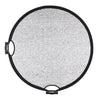









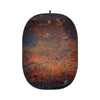









































































































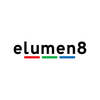




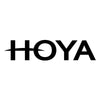





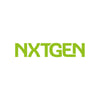

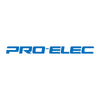

























.png?v=1684397964210)



























